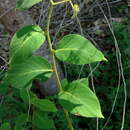en
names in breadcrumbs


Tournefortia, commonly known as soldierbush,[3] is a genus of flowering plants in the borage family, Boraginaceae.
It was first published under the name Pittonia by Charles Plumier in 1703, in honour of Joseph Pitton de Tournefort. Later, Carl Linnaeus changed the name to Tournefortia, on the grounds that Tournefort was virtually unknown by his family name outside France.[4]
The following species are accepted by The Plant List:[5]
Tournefortia angustifolia is added to some versions of the hallucinogenic drink ayahuasca.
6. “Dangling In The Tournefortia” by Charles Bukowski published 2001 Black Sparrow
Tournefortia, commonly known as soldierbush, is a genus of flowering plants in the borage family, Boraginaceae.
It was first published under the name Pittonia by Charles Plumier in 1703, in honour of Joseph Pitton de Tournefort. Later, Carl Linnaeus changed the name to Tournefortia, on the grounds that Tournefort was virtually unknown by his family name outside France.